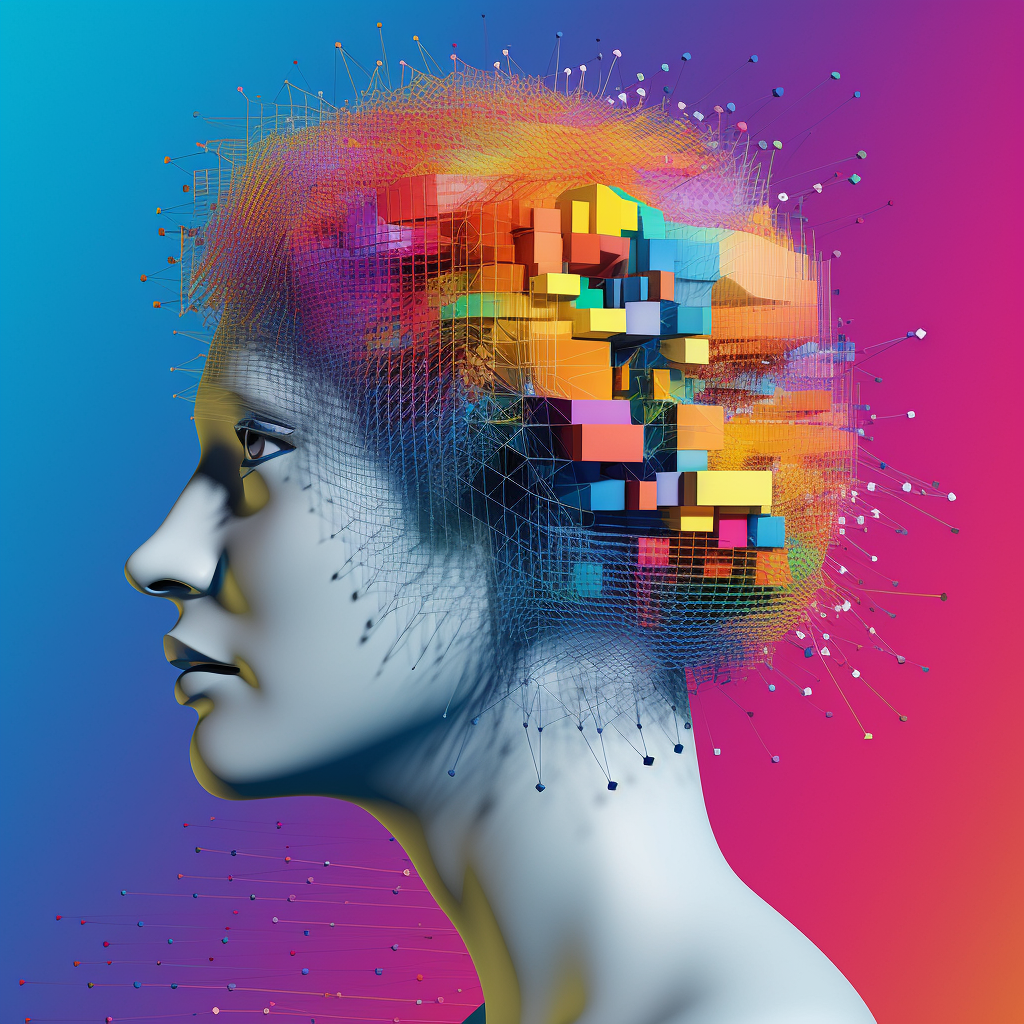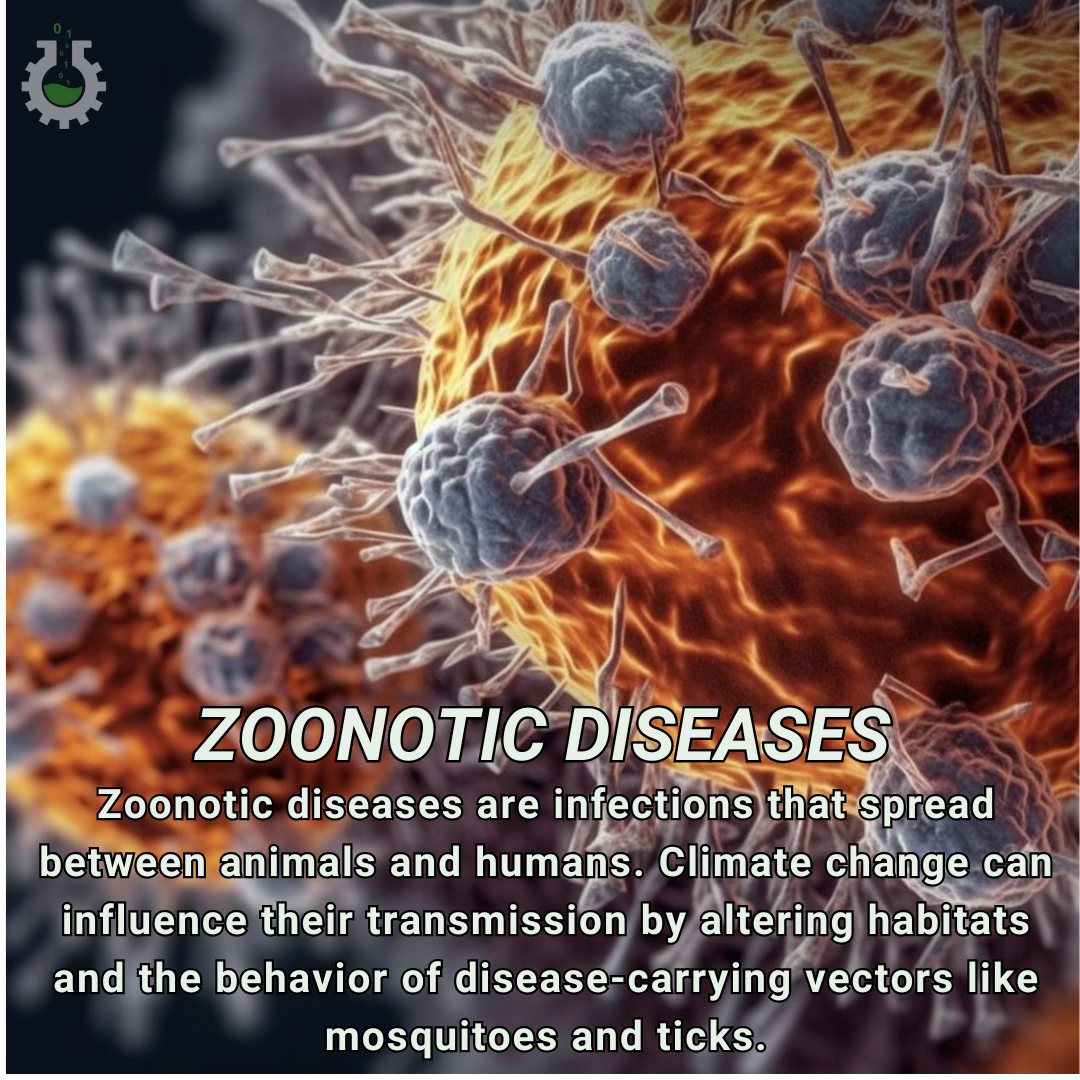
Start thinking more like an analyst.
Learn data science, natural language processing, and big data analysis essentials at your own pace.
Microsoft’s VASA-1 – Ushering in a New Era of Generative AI Technology
The field of generative AI technology has witnessed a slew of significant advancements in recent years. From generating images from text prompts to creating videos from photos using tools like Sora, the capabilities of artificial intelligence are rapidly expanding. A key player in this technological evolution is Microsoft, who recently developed a new artificial intelligence tool, VASA-1. This innovative tool is capable of creating videos from a single photo and a speech audio clip.
However, VASA-1’s capabilities extend far beyond simply generating videos. The AI model can also create synchronized facial and lip movements, enhancing the authenticity and liveliness of the videos it produces. The videos generated by VASA-1 are characterized by a wide spectrum of facial nuances and natural head movements, making the output more realistic and engaging.
Microsoft’s VASA-1 can generate high-resolution videos, up to 512 x 512p at 40 FPS, offering the users control over different aspects such as eye gaze direction, head distance, and emotion offsets. This means that not only is the video quality top-notch, but it also allows for a highly customized viewing experience.
The versatility of VASA-1 is another aspect worth noting. The AI model can generate videos using a wide range of inputs, from artistic photos to singing audio and even non-English speech. This showcases its self-learning ability and adaptability, setting a new standard in the field of generative AI technology.
However, with advancements come potential challenges. The potential misuse of this technology in creating deepfake videos is a concern. In response to these concerns, Microsoft has clarified its intention to use the model for creating virtual interactive characters and advancing forgery detection, rather than for malicious purposes.
These developments in the field of generative AI technology are being closely followed by industry experts. Among them is Daniel John, Senior News Editor at Creative Bloq, who has an impressive track record of working with notable brands such as ITV, NBC, and Channel 4. John has been actively reporting on the developments in the fields of art, design, branding, and lifestyle tech, and continues to monitor the advancements and implications of tools like Microsoft’s VASA-1.
Connect with our expert to explore the capabilities of our latest addition, AI4Mind Chatbot. It’s transforming the social media landscape, creating fresh possibilities for businesses to engage in real-time, meaningful conversations with their audience.
Navigating the Impact of A.I. Chatbots on Social Media Influencers and Their Audience
In recent news, Meta has introduced virtual chatbot versions of famous people like Kendall Jenner for A.I. in its apps, which some critics find odd and not engaging. This move may potentially miss the mark on providing authentic interactions that users crave. On the other hand, Instagram, which is owned by Meta, has launched a new initiative called Creator A.I., aiming to empower influencers to create chatbot versions of themselves. This could streamline communication with followers and make it easier for creators to connect with their audience.
The Value of Direct Connection in Social Media
The value of social media has always been in the direct connection between people, including celebrities and influencers. However, the use of A.I. chatbots may compromise this connection and lead to a less personal experience for users. Despite this, Instagram is testing a program that offers top creators the ability to interact with followers over direct messages using chatbots. This showcases Meta’s commitment to innovation and staying ahead of the game in the social media world.
Instagram’s Creator A.I. Initiative
The program, dubbed “Creator A.I.,” would revolutionize the way creators engage with their audience by enabling them to chat with fans through direct messages. The goal is to help influencers better connect with their fans while reducing the burden of personally responding to every message. This highlights the potential benefits of A.I. technology in streamlining communication processes and enhancing efficiency. Meta’s approach to integrating A.I. into its apps could shape the future of social media interactions.
The Double-Edged Sword of AI Chatbots in Social Media
While the use of A.I. chatbots in social media may raise concerns about authenticity and human connection, it also offers the potential to streamline communication and make interactions more efficient for busy creators. Most messages sent through the program would be A.I.-generated and disclose that fact initially, ensuring transparency and maintaining trust between influencers and their followers.
Meta’s proposition of using virtual chatbots has been met with mixed reactions, but the company continues to explore this approach. Instagram’s Creator A.I. initiative, which began testing in September, aims to strike a balance between efficiency and engagement. As social media continues to evolve, finding ways to connect people directly while managing the workload of popular influencers will be crucial.
Overall, the introduction of A.I. chatbots in social media may be a double-edged sword, offering both benefits and challenges for creators and their audience. As technology advances, companies like Meta will need to work on developing engaging and authentic experiences that resonate with users in the years to come.
Connect with our expert to explore the capabilities of our latest addition, AI4Mind Chatbot. It’s transforming the social media landscape, creating fresh possibilities for businesses to engage in real-time, meaningful conversations with their audience.
Adobe Premiere Pro’s Integration of Advanced AI Features
Adobe has ushered in a new era in video editing with the launch of Adobe Premiere Pro integrated with advanced AI features. These new features, including Auto Reframe 2.0, Scene Edit Detection, and Intelligent Audio Cleanup, are designed to improve video editing processes, enhance accessibility, and foster collaboration among editors.
Introduction to AI in Adobe Premiere Pro
Artificial Intelligence (AI) in Adobe Premiere Pro is revolutionizing the way video editing is done, making it faster, more efficient, and accessible to a wider range of creators. With the integration of AI, Adobe Premiere Pro can now automate tedious tasks such as reframing videos for different social media platforms, detecting scene changes, and cleaning up audio tracks. This not only saves time but also allows editors to focus on the creative aspects of their projects. The AI-driven features are built to learn from the user’s editing style, thus improving over time and providing personalized editing experiences. This introduction of AI into Adobe Premiere Pro is a testament to Adobe’s commitment to innovation and its vision for the future of video editing.
The AI enhancements in Adobe Premiere Pro are set to create a significant ripple effect across several industries like content creation, marketing, advertising, and education. By providing powerful tools for video production, Adobe is shaping the future of these industries and changing the landscape of video editing.
Adobe’s innovative approach is clearly demonstrated in the introduction of AI capabilities in Premiere Pro. This innovation promises a more efficient and natural editing experience for creators, making the often daunting task of video editing a lot more manageable and intuitive.
Adobe plans generative AI video editing tools for Premiere Pro
In a bold move to further enhance the video editing landscape, Adobe has announced plans to introduce new Generative AI video tools in Premiere Pro. These tools are expected to redefine the creative process by automating complex editing tasks such as extending shots, adding or removing objects in scenes, and even generating new content within a video clip. This leap forward in AI technology means that video editors will soon have at their disposal tools that can create visually stunning effects and scenes that were previously impossible or would require extensive manual work. Adobe’s commitment to integrating Generative AI tools into Premiere Pro demonstrates their foresight in leveraging emerging technologies to empower creators and expand the horizons of video editing.
In addition to these new features, Adobe Premiere Pro is also set to receive new Generative AI video tools this year. These tools are designed to streamline processes and offer new creative possibilities, such as extending shots or adding/removing objects in scenes. These advancements are poised to open the door to a whole new world of video editing possibilities.
How to Use AI in Adobe Premiere Pro?
Utilizing AI in Adobe Premiere Pro is a straightforward process designed to enhance the video editing workflow significantly. To begin with, editors can access AI features such as Auto Reframe, Scene Edit Detection, and Intelligent Audio Cleanup directly from the software’s interface. These features can be applied to projects with just a few clicks, automating processes that would typically take hours to complete manually. For example, the Auto Reframe feature automatically adjusts your video clip’s aspect ratio to suit different platforms, making it perfect for social media content creators who need to adapt their videos for various channels. Similarly, Scene Edit Detection automatically identifies changes in scenes, allowing for quick edits or the addition of transitions. As Adobe continues to integrate more AI tools, including the upcoming Generative AI video tools, learning to leverage these features will become an essential skill for video editors looking to stay ahead in the industry.
In addition to the introduction of new AI tools, Adobe is also working on a video model for Firefly. This model is designed to enhance video and audio clip editing workflows in Premiere Pro, empowering anyone to create and brainstorm with ease and efficiency.
Adobe also has plans to incorporate third-party generative AI models from OpenAI, Pika Labs, and Runway directly into Premiere Pro. This move will allow users to utilize different models within their workflows, offering a more versatile and customized editing experience.
Finally, Adobe has made AI-powered audio workflows in Premiere Pro generally available. This feature is aimed at simplifying and speeding up audio clip editing, saving editors valuable time and effort.
In conclusion, Adobe’s integration of advanced AI features in Premiere Pro is a game-changer in the world of video editing. It not only simplifies the editing process but also opens up new creative avenues for editors. With these new tools and features, Adobe is truly revolutionizing the video editing landscape.
Connect with our expert to explore the capabilities of our latest addition, AI4Mind Chatbot. It’s transforming the social media landscape, creating fresh possibilities for businesses to engage in real-time, meaningful conversations with their audience.
Climate Change Poster Collection of the Day – Zoonotic Diseases
Today’s Climate Change Poster Collection highlights Zoonotic diseases, which are infections transmitted from animals to humans, have emerged as a significant public health concern across the globe. These diseases account for a substantial portion of new and existing diseases in humans, with a notable example being the recent COVID-19 pandemic, which has highlighted the devastating impacts zoonotic diseases can have on global health, economies, and societies. The connection between zoonotic diseases and climate change is complex and multifaceted, with climate change acting as a powerful driver that exacerbates the risks and spread of these diseases.
As the planet experiences unprecedented changes in climate, including rising temperatures, altered precipitation patterns, and more extreme weather events, the habitats of many species are being affected. These changes are not only causing wildlife to migrate and come into closer contact with humans but are also altering the distribution and lifecycle of numerous pathogens and their vectors, such as mosquitoes, ticks, and rodents, which are known to carry diseases like Zika, Lyme disease, West Nile virus, and malaria. For instance, warmer temperatures can accelerate the life cycles of pathogens or increase the breeding rates of vectors, thereby enhancing their ability to transmit diseases.
Furthermore, climate change is contributing to more frequent and severe natural disasters, such as floods and hurricanes, which can create ideal conditions for outbreaks of waterborne and vector-borne zoonotic diseases. These events can disrupt ecosystems and human settlements, leading to increased interactions between wildlife, livestock, and humans, and potentially facilitating the spillover of pathogens across species barriers.
Deforestation and changes in land use, often driven by the need to accommodate growing populations and agricultural demands, are another link between climate change and zoonotic diseases. As natural habitats are destroyed or fragmented, wildlife is forced into closer proximity with human communities, increasing the likelihood of disease transmission. Additionally, the stress placed on animal populations by changing environments and reduced habitats can weaken their immune systems, making them more susceptible to infections that could be passed on to humans.
The intricate relationship between zoonotic diseases and climate change underscores the need for a One Health approach, which recognizes the interconnection between human, animal, and environmental health. Addressing the challenges posed by zoonotic diseases in the context of a changing climate requires collaborative efforts across disciplines and sectors, including public health, veterinary medicine, environmental science, and policy-making. By integrating strategies that protect the environment, promote sustainable land use, and enhance surveillance of zoonotic diseases, it is possible to mitigate the impacts of climate change and reduce the risk of future pandemics, safeguarding the health of both the planet and its inhabitants.
Discover an inspiring collection of climate change poster.
Climate Change’s Impact on Migratory Birds at the Great Salt Lake
Scientists Carly Biedul, Bonnie Baxter, and Heidi Hoven are at the forefront of a crucial investigation. They are probing into the impact of the West’s record megadrought and climate change on the migratory birds of the Great Salt Lake in Utah. Their research is both timely and critical, as the Great Salt Lake, the largest saline lake in the western hemisphere, is a key stopover for migratory birds. However, the lake is in trouble.
The lake is seeing a sharp decline due to drought, climate change, and water diversions, leading to a significant decrease in bird populations. Factors such as water diversions for farming and a burgeoning population in Utah are contributing substantially to the Great Salt Lake’s decline. These issues are compounded by the fact that despite recent snowfall, the lake continues to shrink. It has already reduced nearly half from its historical average due to years of drought, climate change, and water diversions.
Aware of the dire situation, Utah Governor Spencer Cox is dedicated to preventing the lake from drying up. The state legislature has followed suit, investing in water conservation programs with a primary focus on farmers. They aim to mitigate the lake’s decline, which has had a domino effect on the region’s ecosystem.
One of the most significant impacts of the lake’s decline is on the brine shrimp. These tiny creatures, a primary food source for migratory birds, are dying out. This has led to significant drops in bird populations, including burrowing owls and snowy plovers. The effect is a stark indicator of the lake’s importance to the region’s biodiversity.
The lake’s decline is attributed to a combination of factors. The West’s megadrought, worsened by climate change, is a key contributor. Additionally, agriculture and Utah’s booming population have led to development and water diversions for expanding farmlands and dairies. This means less water flows into the lake, exacerbating its decline.
Recognizing the importance of the lake to various industries, including skiing, mining, and air quality, the state of Utah is heavily invested in water conservation programs and public awareness campaigns. The lake’s health is not just an ecological concern, but an economic and social one as well. The research by scientists Biedul, Baxter, and Hoven is a significant part of this effort, highlighting the urgent need for intervention and the importance of maintaining the balance between human activities and the natural world.
Science4Data is committed to cut through greenwashing and measure real impact. Join the journey to a sustainable future. Your actions matter.
The Humane AI Pin Review
Living A More Ambient Computing Life With AI
The Humane Pin is a wearable device and software platform that aims to act as a “second brain” for its users by utilizing artificial intelligence technology. This compact and lightweight device features a touch-sensitive panel, projector, camera, microphone, and speakers, all housed in a sleek design with a magnetic attachment for convenience. Interacting with the AI Pin involves a combination of voice commands, touch, and gestures, although its functionality is limited without speaking.
How the AI Pin works
Despite its thoughtful design, the AI Pin has faced criticism for being slow, unreliable, and expensive given its capabilities. Users have access to AI models such as OpenAI’s ChatGPT 4.0 and Google Assistant with a simple tap, offering a wide range of functionalities. However, the device has been known to make mistakes, such as incorrectly stating that high-fructose corn syrup is banned in California. Inaccuracies like identifying Angkor Wat as the Phraya Nakhon Cave have raised concerns about the AI Pin’s accuracy and reliability.
The AI Pin feels like a dedicated AI gadget, but its battery life is a concern. Users can extend the battery life by using two battery boosters, which attach magnetically to the device. The AI Pin requires a green light to indicate that it’s listening, similar to the Apple Watch. The wearable computer promises to be a game-changer, but the vision feature still needs improvement.
Overall, the Humane Pin is currently viewed as lacking in features and accuracy, functioning more as a novelty or party trick rather than a truly dependable and efficient tool. While the device has shown promise in certain tasks, it still has a long way to go in terms of becoming a reliable and indispensable tool for its users. The AI OS powering the device needs further development to handle more complex tasks like phone calls and real-time translation.
Connect with our expert to explore the capabilities of our latest addition, AI4Mind Chatbot. It’s transforming the social media landscape, creating fresh possibilities for businesses to engage in real-time, meaningful conversations with their audience.







